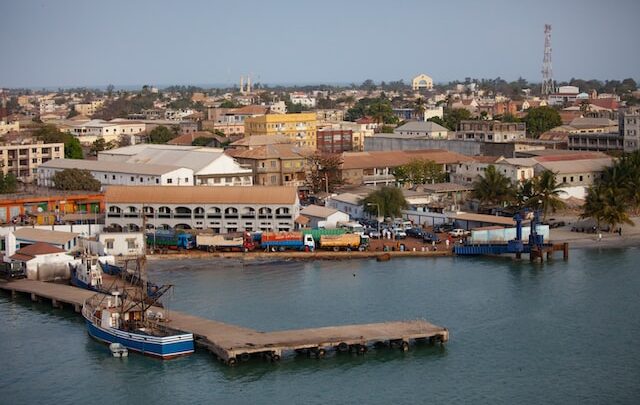What is the Smallest Country in Africa?

The Gambia is Africa’s smallest country on mainland Africa while the island nation of Seychelles is the smallest country in Africa when all 54 countries are taken into consideration.
To break down the African continent, there are the mainland and island countries. There are 48 countries on the mainland, while there are six island nations. The African continent includes several so-called island states, both geographically and politically.
Algeria, located in North Africa, is the continent’s largest country in terms of land area, at 2,381,741 km2. In terms of size, it’s about a quarter of the United States.
Also Read: Top 10 Richest African Countries by Overall GDP, GDP per Capita & GNI
The Smallest Country in Africa, Mainland Africa
The Gambia is Africa’s smallest country on the mainland, with a population of about 2.5 million and an area of just 11,295 square miles. If you wanted to, you could pack The Gambia 222 times into Algeria!
Senegal encircles The Gambia on three sides, with the Atlantic Ocean being its western border. Named after the Gambia River, which cuts through the country’s centre and widest point, it is a tiny nation measuring only 50 kilometres across at its broadest point.
The Gambia’s boundary is said to have been created by a British warship firing a cannon. The line was established according to where the cannonballs landed.
The Gambia became a British colony in 1765, when English was made the official language of the country. It was exactly two hundred years later when the country became independent.
Also Read: Top 5 Worlds Strongest Army & The Strongest Army in Africa
What is the Smallest Country in Africa?
The island nation of Seychelles is the smallest country in Africa when all 54 countries are taken into consideration. As it turns out, all five of Africa’s smallest countries are located on islands.
Also Read: Top 10 African Country with Gold Reserve
Get to know the Seychelles, the Smallest Country in Africa
459 square kilometres of the Seychelles are located on the east coast of Africa, just north of Madagascar, in the Indian Ocean. In comparison, The Gambia is over 24 times smaller in area.
The Gambia has a population of 2.5 million people, while Seychelles has only 100,000. One of Africa’s wealthiest ten countries, it is also one of the most developed.
Also Read: Top Most Corrupt Countries in the World and in Africa
Seychelles, despite its reputation as an island republic, is a single country of 115 islands. It’s 1500 kilometres from the continent of Africa, but it’s a charming little getaway with crystal-clearturquoise water, white sand beaches, and fantastic snorkelling and scuba diving.
Several shark species and sea turtles that lay their eggs each year on the islands’ beaches are among the more than a thousand species of marine life that scientists have discovered.
The Seychelles island‘s enormous tortoises can be found further inland. Once thought extinct, the gigantic tortoise has made a comeback.
Because it was a former British colony, the city of Victoria was named after the British queen of the same name. Mahé Island, the country’s largest, is where you’ll discover Victoria.
French, along with English and Seychellois Creole, is one of the official languages of the country, having been first colonised by the French and afterwards used as a pirate base.
Africa’s smallest country by land area is Seychelles.
Source Credit: theworldatlas.com, africafreak.com





